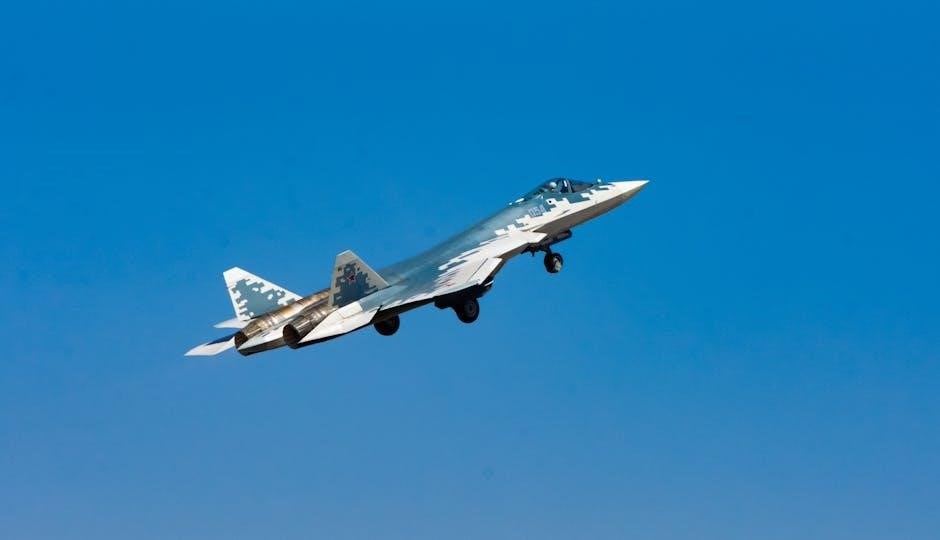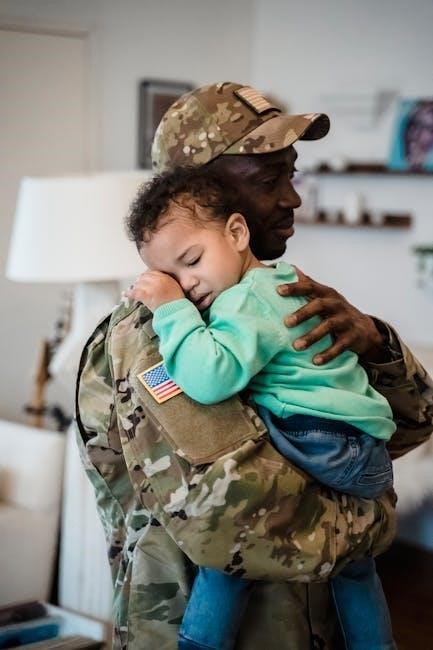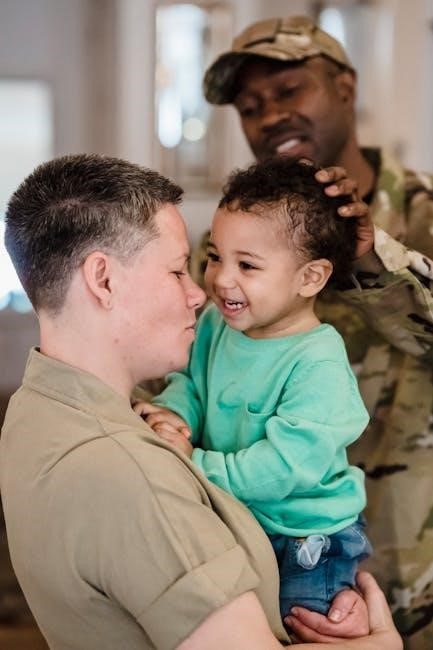What is the Military Alphabet?
The military alphabet, synonymous with the NATO phonetic alphabet, is a standardized system used to represent letters. It ensures clarity in verbal communication, especially in noisy environments or when transmitting over radio. Its primary goal is to minimize misunderstandings.
Definition and Purpose
The military alphabet, also known as the NATO phonetic alphabet or the International Radiotelephony Spelling Alphabet, is a crucial communication tool. It assigns unique code words to each letter of the English alphabet. Its primary purpose is to ensure accurate and clear communication, especially in situations where verbal clarity is compromised. This includes radio transmissions, noisy environments, or when language barriers exist. By using standardized code words, the risk of misinterpretation is significantly reduced, leading to more effective and efficient communication across various sectors, including military, aviation, and civilian applications.

The NATO Phonetic Alphabet
The NATO phonetic alphabet is a standardized set of code words for letters. It aims to improve communication clarity. It is crucial in military, aviation, and civilian sectors to accurately convey messages where clarity is essential.
Adoption and Standardization
The NATO phonetic alphabet gained widespread acceptance in 1956, quickly becoming the universal standard for military and civilian communications. Its adoption addressed the critical need for a clear and unambiguous communication method, especially in environments prone to noise or interference. Standardization ensures that individuals from different backgrounds can easily understand each other, reducing errors. This standardization extended to amateur radio, further solidifying its place as the go-to phonetic alphabet. Flaghoist communication, while still used, benefits from this standardized verbal communication. The alphabet’s clear structure facilitates precise message transmission across various mediums.
Military Alphabet Chart
A military alphabet chart displays the phonetic alphabet used by the military to communicate letters clearly. These charts ensure accurate communication over the radio, especially in noisy or challenging environments. They are essential tools.
Importance of a Military Alphabet Chart
Military alphabet charts play a vital role in ensuring clear and unambiguous communication, particularly in environments where misinterpretation can have severe consequences. The consistent use of standardized code words, like “Alpha” for A or “Bravo” for B, minimizes errors during voice transmissions, especially over radios or in noisy settings. Charts serve as quick references, reducing the need to memorize the entire alphabet. This accessibility speeds up communication and allows users to confirm the correct phonetic word when needed, preventing costly mistakes and promoting efficiency.
Common Uses of the Military Alphabet
The military alphabet sees widespread adoption across various sectors. From armed forces ensuring clarity in tactical communications to civilian aviation for air traffic control, the alphabet’s standardized nature minimizes errors. Emergency services also utilize it.
Military Communications
Within military contexts, the military alphabet is indispensable for precise and unambiguous communication, especially in situations where clarity is paramount. Whether transmitting orders, coordinating troop movements, or relaying critical information, the standardized alphabet eliminates potential misunderstandings caused by similar-sounding letters.
Its use ensures that messages are accurately conveyed across various communication channels, including radio transmissions and verbal exchanges in noisy environments. The military alphabet is a cornerstone of effective communication, minimizing the risk of errors and ensuring mission success in high-stakes scenarios. This contributes to improved operational efficiency and safety.
Civilian Applications
Beyond its military origins, the phonetic alphabet finds diverse applications in civilian life. Customer service representatives utilize it to confirm details with customers over the phone. Aviation professionals rely on it for clear communication between pilots and air traffic control. Law enforcement agencies employ it for dispatching information and coordinating responses.
Its use extends to any situation where accurate and unambiguous verbal communication is essential. By reducing the likelihood of errors caused by misheard letters, the phonetic alphabet enhances efficiency and ensures clarity in critical interactions. The civilian applications highlight the universal value of this standardized communication tool.

Memorizing the Military Alphabet
Memorizing the military alphabet can be achieved through various methods. Effective techniques include using flashcards for repetitive practice and utilizing readily available PDF charts for quick reference. Consistent practice is key to mastering the alphabet.
Flashcard Method
The flashcard method is a highly effective way to memorize the military alphabet. This involves creating physical or digital flashcards with the letter on one side and its corresponding code word (e.g., Alpha, Bravo, Charlie) on the other. You can test yourself repeatedly, reinforcing your memory. Alternatively, enlist a friend or family member to quiz you, providing immediate feedback. This active recall technique significantly improves retention and helps in quickly associating each letter with its phonetic equivalent, ensuring accurate and rapid recall of the military alphabet for effective communication.
PDF Charts for Easy Reference
PDF charts offer a convenient and readily accessible resource for learning and referencing the military alphabet. These charts typically display each letter alongside its corresponding phonetic word and pronunciation guide. The portable nature of PDF documents makes them ideal for quick consultation on various devices, such as smartphones, tablets, or computers. Users can easily download and print these charts, keeping them handy for study sessions or as a reference during communication tasks. Having a readily available visual aid like a PDF chart greatly enhances the learning process and ensures accurate usage of the military alphabet in diverse situations.

History of the Military Alphabet
The military alphabet’s history involves multiple iterations, evolving from earlier phonetic alphabets. These adaptations addressed clarity issues in voice communication, particularly in military contexts. The NATO phonetic alphabet became effective in 1956 for universal use.
Evolution and Development
The evolution of the military alphabet reflects a continuous effort to enhance communication accuracy across various sectors. Preceding versions existed before the widely adopted NATO phonetic alphabet became standard. Early iterations faced challenges in distinguishing certain letters due to similar sounds. The drive for a universal and unambiguous system led to the refinement and standardization witnessed today. This involved careful selection of code words, ensuring they were easily pronounceable and distinguishable across different languages and accents. The current NATO alphabet has become a crucial component in military, civilian, and amateur radio communications, minimizing errors and ensuring effective information exchange.
Pronunciation Guide
Accurate pronunciation is vital for the military alphabet’s effectiveness. Each code word has a specific phonetic pronunciation to avoid confusion. Resources are available to guide users in correctly articulating each term, ensuring clear communication across diverse accents.
Correct Pronunciation of Each Code Word
To ensure seamless communication, mastering the correct pronunciation of each code word in the NATO phonetic alphabet is essential. “Alfa” is pronounced as “AL-FAH,” emphasizing the first syllable. “Bravo” is spoken as “BRAH-VOH,” and “Charlie” as “CHAR-LEE.” “Delta” becomes “DELL-TAH,” while “Echo” is clearly “ECK-OH.” “Foxtrot” is articulated as “FOKS-TROT,” and “Golf” simply as “GOLF.” “Hotel” is pronounced “HOH-TELL,” and “India” as “IN-DEE-AH.” “Juliett” is “JEW-LEE-ETT,” “Kilo” is “KEY-LOH,” and “Lima” transforms to “LEE-MAH.” With precise pronunciation, clarity in communication is significantly enhanced.
Downloadable Resources
Numerous resources exist for easy access to the military alphabet. Free PDF charts are readily available for download, offering quick reference. Word templates provide customizable options for personal use. These resources aid memorization and application of the alphabet.
Free PDF Charts
Numerous websites offer free, downloadable PDF charts of the military alphabet, also known as the NATO phonetic alphabet. These charts are valuable resources for individuals seeking to learn or reference the code words associated with each letter. These printable PDFs provide a convenient and accessible way to study the alphabet, whether for military communications, civilian applications, or educational purposes. Users can easily print these charts for quick reference during training exercises or real-world scenarios. The availability of these free PDF resources significantly aids in the widespread understanding and utilization of the military alphabet.
Word Templates
In addition to PDF charts, Word templates of the military alphabet are also readily available for download. These templates offer a customizable format, allowing users to modify and personalize the chart according to their specific needs. With a Word template, one can easily adjust the font size, add notes, or rearrange the layout. This flexibility makes Word templates a useful tool for creating tailored learning aids or reference materials. They provide an editable alternative to static PDF charts, enabling users to actively engage with the content and adapt it to their preferred learning style, improving retention and comprehension.

Alternatives to the Military Alphabet
While the military alphabet offers a robust solution, flaghoist communication presents another method. Ships use flags to communicate messages, offering a visual alternative. This system is useful when radio communication is unavailable or impractical, providing a silent means of conveying information.
Flaghoist Communication
Flaghoist communication serves as an alternative to the military alphabet, particularly for maritime applications. Ships employ flags, each representing specific letters or meanings, to transmit messages visually. This method proves invaluable when radio communication is compromised or impractical. The flags, arranged in specific sequences on a hoist, convey instructions, warnings, or information between vessels. Its reliance on visual signals makes it ideal for situations where radio silence is essential or equipment malfunctions occur. Proficiency in flaghoist communication remains a vital skill for sailors and maritime professionals, ensuring effective communication even in challenging circumstances, complementing the capabilities of the military alphabet.
Organizations Using the Military Alphabet
Several global organizations employ the military alphabet to ensure clear communication. NATO and ICAO are primary examples, standardizing its usage. These organizations utilize the alphabet across diverse operations, enhancing interoperability and reducing miscommunication during critical international interactions.
NATO
The North Atlantic Treaty Organization (NATO) is a key organization that officially adopted and standardized the military alphabet, also referred to as the NATO phonetic alphabet. This standardization aimed to ensure seamless communication among its member states. NATO’s adoption has been critical in promoting interoperability during joint military exercises and operations. By utilizing a common phonetic alphabet, misunderstandings are reduced, enhancing coordination and operational effectiveness. This has become a universal language, fostering better relationships in military operations and improving overall security efforts. It is important for all members to use it.
ICAO
The International Civil Aviation Organization (ICAO) also utilizes the NATO phonetic alphabet, further solidifying its global recognition. ICAO’s adoption ensures uniform communication standards across the aviation industry, promoting safety and efficiency. Clear communication is critical in aviation to prevent misunderstandings between pilots and air traffic controllers. By using the same phonetic alphabet, ICAO reduces the risk of errors during radio transmissions, enhancing flight safety. This standardization is crucial for international flights, where personnel from different countries must communicate effectively. Therefore, ICAO’s implementation of the NATO phonetic alphabet has greatly improved aviation safety worldwide.
